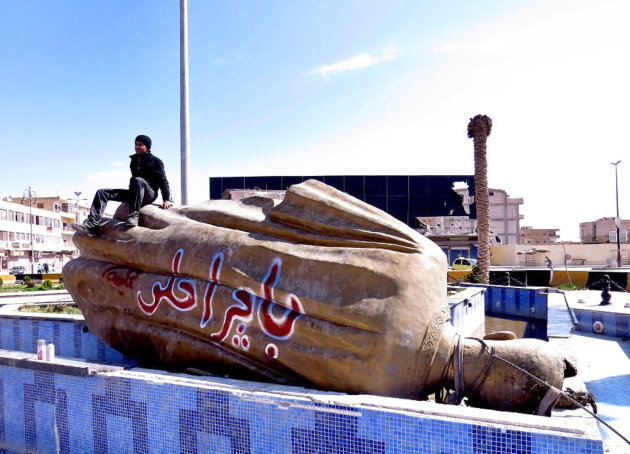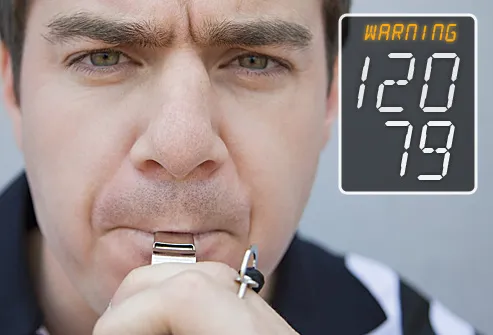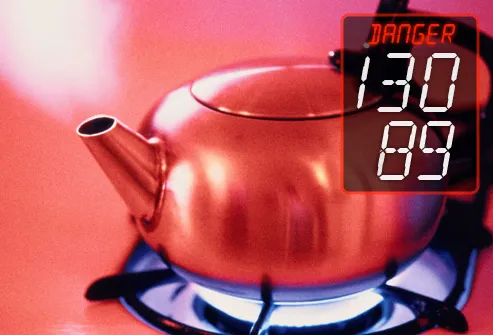It is difficult to believe that a
man kept the corpse of his mother for more than 10 years in a cupboard
without informing the woman’s relations that she was dead. This is the
puzzle residents of Ejemekwuru in Oguta Local Government Area of Imo
State are still battling to unravel. As they search for answers,
everyone agrees that the land has been desecrated.
Ejemekwuru, a town in Imo State is surrounded by Akabor and Agwa to the west and has boundaries with Ogbaku in the North and Izombe in the South. The history of this community dates back to over 400 years ago. Ejemekwuru is a decent Christian community with a population of about 12,000 inhabitants who are predominantly Catholics and Anglicans.
There are a good number of Pentecostal Christians and an insignificant number of adherents of the African traditional religion. Home to famous politicians and technocrats like late Nze Eugene Amadi, late Nze D.A Umelor, Dr Cajethan Duruji, former Dean of the Faculty of Arts, University of Nigeria, Nsukka and also a Commissioner between 1979 to 1983, Prof. Paschal Osigwe, Dr Mrs. Rose Achunine, former Minister of State for Education, Dr Basil Achunine, Chief Uba Osigwe, Secretary to Imo State Government between 1996 to 1999, Nze A.U Chibeneme, Sir Obinna H. Duru, Nze D.C.C Edozien, Sir. P.C Amako, Sir. I.E Ihemedu, Ejimekwuru has remained one of the most peaceful communities in Imo State despite some challenges of producing a generally accepted traditional ruler (Eze).
But that peace was shattered on Monday, May 13, 2013 when a 22-year-old boy ventured into his father’s secret room in search of his credentials, opened a large wardrobe, which was securely locked and got the shock of his life when he found the mummified body of his grandmother, who was generally believed to have gone missing since 2003.
The owner of the house, a 68-year-old retired vice principal, Chief Chimezie Osigweh, was thereafter alleged to have murdered his 78-year-old mother, Mrs. Lucy Osigweh in circumstances depicting ritual purpose. Mrs. Lucy Osigweh was declared missing in 2003. While members of her family and residents of her community were busy searching for her, her corpse was right inside her son’s room. Instead of announcing the passage of his mother, Chimezie Osigweh decided to embalm the body, placing it in the cupboard in a room which also serves as his shrine.
Though the traumatised residents of Ejemekwuru attest that Chimezie Osigweh belongs to a secret cult, they insist that there was nothing on earth to indicate that he was actually responsible for the disappearance of his mother. A resident, Mr. Chukwukere Amadi, said, “We did not suspect him because he is a native of this community.
But nobody comes to his compound and when you ask him of his mother’s whereabouts, he would say she travelled abroad. We are aware that he is a member of a secret cult, which is why he did not want to get close to the people.”
Amadi expressed disappointment at the turn of events, as he disclosed that Chief Osigweh’s late father, who introduced the Catholic Church to the village, was a principal and a brilliant man. A source in the village, who declined to be named, however, said though brilliant, Chief Osigweh displayed some mental instability.
Apart from Osigweh’s queer behaviour, when Saturday Mirror visited his compound, it was discovered to be filthy with the rooms filled with junk. Right inside the building, there are about four rooms tightly packed with all manner of things, which are roughly arranged in a disorganised manner.
There are large sized pictures of Sat Guru Maharaji and also an Almanac that has pictures of Guru Maharaji and American President, Barrack Obama. In the inner room, which serves as his temple, there is a table covered with a red piece of cloth, which Osigweh describes as the golden table where anything about anyone’s life can be revealed.
“Anyone who sits on that table, the secrets of life will be revealed to him,” he insists.
This was where Chief Osigweh claimed he was mediating in 2003 when his mother fell and died while answering nature’s call at about 1am. Narrating how his mother died, the frail looking Osigwe said, “That early hour, sometime in 2003, I was meditating in my temple when my mother came in to ease herself. Suddenly I heard a big noise. I went in and found her groaning, I took her to her room and laid her on the bed before she passed on.
“But you see, she is still here but I can’t tell you why she is here ten years after because the enemies of Guru Maharaji are all over here. I will talk to you people in camera”. He, however, confessed that the body of his late mother was embalmed by a staff of one of the General Hospitals in the state, who died thereafter.
The suspect, who fielded questions in impeccable English, said he has been a member of the sect for the past 24 years and has attained high spiritual level, and that he can travel to see God at will.
Mr Ike Osigwe, a younger brother to Chief Osigwe, who claims he has not been living in the family house since his return from Delta State in 2009 because his brother has turned the place to a temple for his members, said that he never knew that their mother’s corpse was hidden in the house and only got to know about it after the search by police men.
He urged the police to torture his brother for the atrocity he committed against their mother. “I want him to suffer in the police custody because of what he has done to the family and to the memory of our father because no normal person would do what he did. He is mentally derailed to keep his mother’s corpse in a wardrobe for whatever purpose,” he said.
Marcellinus Onyima, another resident who disclosed that the late Mrs. Osigwe was the elder sister of his father, described Chief Osigweh as ungodly. “He did not inform his maternal relations that his mother was dead.
Each time they asked about her, his usual answer was that she was in the United States with her children. “This man (Chimezie) never told anybody that his mother was dead. All he kept telling people whenever they asked about the mother is that she has gone to America to live with her other children and most people believed him because his brothers are in the US.
“So when we heard what happened, we were shocked. We know that he practices an occult religion, because that explains why he could do what he did”.
Another resident told Saturday Mirror that, “We have information about the large number of devotees that patronise the shrine, which will help to identify those behind the heinous act.”
Ejemekwuru, a town in Imo State is surrounded by Akabor and Agwa to the west and has boundaries with Ogbaku in the North and Izombe in the South. The history of this community dates back to over 400 years ago. Ejemekwuru is a decent Christian community with a population of about 12,000 inhabitants who are predominantly Catholics and Anglicans.
There are a good number of Pentecostal Christians and an insignificant number of adherents of the African traditional religion. Home to famous politicians and technocrats like late Nze Eugene Amadi, late Nze D.A Umelor, Dr Cajethan Duruji, former Dean of the Faculty of Arts, University of Nigeria, Nsukka and also a Commissioner between 1979 to 1983, Prof. Paschal Osigwe, Dr Mrs. Rose Achunine, former Minister of State for Education, Dr Basil Achunine, Chief Uba Osigwe, Secretary to Imo State Government between 1996 to 1999, Nze A.U Chibeneme, Sir Obinna H. Duru, Nze D.C.C Edozien, Sir. P.C Amako, Sir. I.E Ihemedu, Ejimekwuru has remained one of the most peaceful communities in Imo State despite some challenges of producing a generally accepted traditional ruler (Eze).
But that peace was shattered on Monday, May 13, 2013 when a 22-year-old boy ventured into his father’s secret room in search of his credentials, opened a large wardrobe, which was securely locked and got the shock of his life when he found the mummified body of his grandmother, who was generally believed to have gone missing since 2003.
The owner of the house, a 68-year-old retired vice principal, Chief Chimezie Osigweh, was thereafter alleged to have murdered his 78-year-old mother, Mrs. Lucy Osigweh in circumstances depicting ritual purpose. Mrs. Lucy Osigweh was declared missing in 2003. While members of her family and residents of her community were busy searching for her, her corpse was right inside her son’s room. Instead of announcing the passage of his mother, Chimezie Osigweh decided to embalm the body, placing it in the cupboard in a room which also serves as his shrine.
Though the traumatised residents of Ejemekwuru attest that Chimezie Osigweh belongs to a secret cult, they insist that there was nothing on earth to indicate that he was actually responsible for the disappearance of his mother. A resident, Mr. Chukwukere Amadi, said, “We did not suspect him because he is a native of this community.
But nobody comes to his compound and when you ask him of his mother’s whereabouts, he would say she travelled abroad. We are aware that he is a member of a secret cult, which is why he did not want to get close to the people.”
Amadi expressed disappointment at the turn of events, as he disclosed that Chief Osigweh’s late father, who introduced the Catholic Church to the village, was a principal and a brilliant man. A source in the village, who declined to be named, however, said though brilliant, Chief Osigweh displayed some mental instability.
Apart from Osigweh’s queer behaviour, when Saturday Mirror visited his compound, it was discovered to be filthy with the rooms filled with junk. Right inside the building, there are about four rooms tightly packed with all manner of things, which are roughly arranged in a disorganised manner.
There are large sized pictures of Sat Guru Maharaji and also an Almanac that has pictures of Guru Maharaji and American President, Barrack Obama. In the inner room, which serves as his temple, there is a table covered with a red piece of cloth, which Osigweh describes as the golden table where anything about anyone’s life can be revealed.
“Anyone who sits on that table, the secrets of life will be revealed to him,” he insists.
This was where Chief Osigweh claimed he was mediating in 2003 when his mother fell and died while answering nature’s call at about 1am. Narrating how his mother died, the frail looking Osigwe said, “That early hour, sometime in 2003, I was meditating in my temple when my mother came in to ease herself. Suddenly I heard a big noise. I went in and found her groaning, I took her to her room and laid her on the bed before she passed on.
“But you see, she is still here but I can’t tell you why she is here ten years after because the enemies of Guru Maharaji are all over here. I will talk to you people in camera”. He, however, confessed that the body of his late mother was embalmed by a staff of one of the General Hospitals in the state, who died thereafter.
The suspect, who fielded questions in impeccable English, said he has been a member of the sect for the past 24 years and has attained high spiritual level, and that he can travel to see God at will.
Mr Ike Osigwe, a younger brother to Chief Osigwe, who claims he has not been living in the family house since his return from Delta State in 2009 because his brother has turned the place to a temple for his members, said that he never knew that their mother’s corpse was hidden in the house and only got to know about it after the search by police men.
He urged the police to torture his brother for the atrocity he committed against their mother. “I want him to suffer in the police custody because of what he has done to the family and to the memory of our father because no normal person would do what he did. He is mentally derailed to keep his mother’s corpse in a wardrobe for whatever purpose,” he said.
Marcellinus Onyima, another resident who disclosed that the late Mrs. Osigwe was the elder sister of his father, described Chief Osigweh as ungodly. “He did not inform his maternal relations that his mother was dead.
Each time they asked about her, his usual answer was that she was in the United States with her children. “This man (Chimezie) never told anybody that his mother was dead. All he kept telling people whenever they asked about the mother is that she has gone to America to live with her other children and most people believed him because his brothers are in the US.
“So when we heard what happened, we were shocked. We know that he practices an occult religion, because that explains why he could do what he did”.
Another resident told Saturday Mirror that, “We have information about the large number of devotees that patronise the shrine, which will help to identify those behind the heinous act.”

















